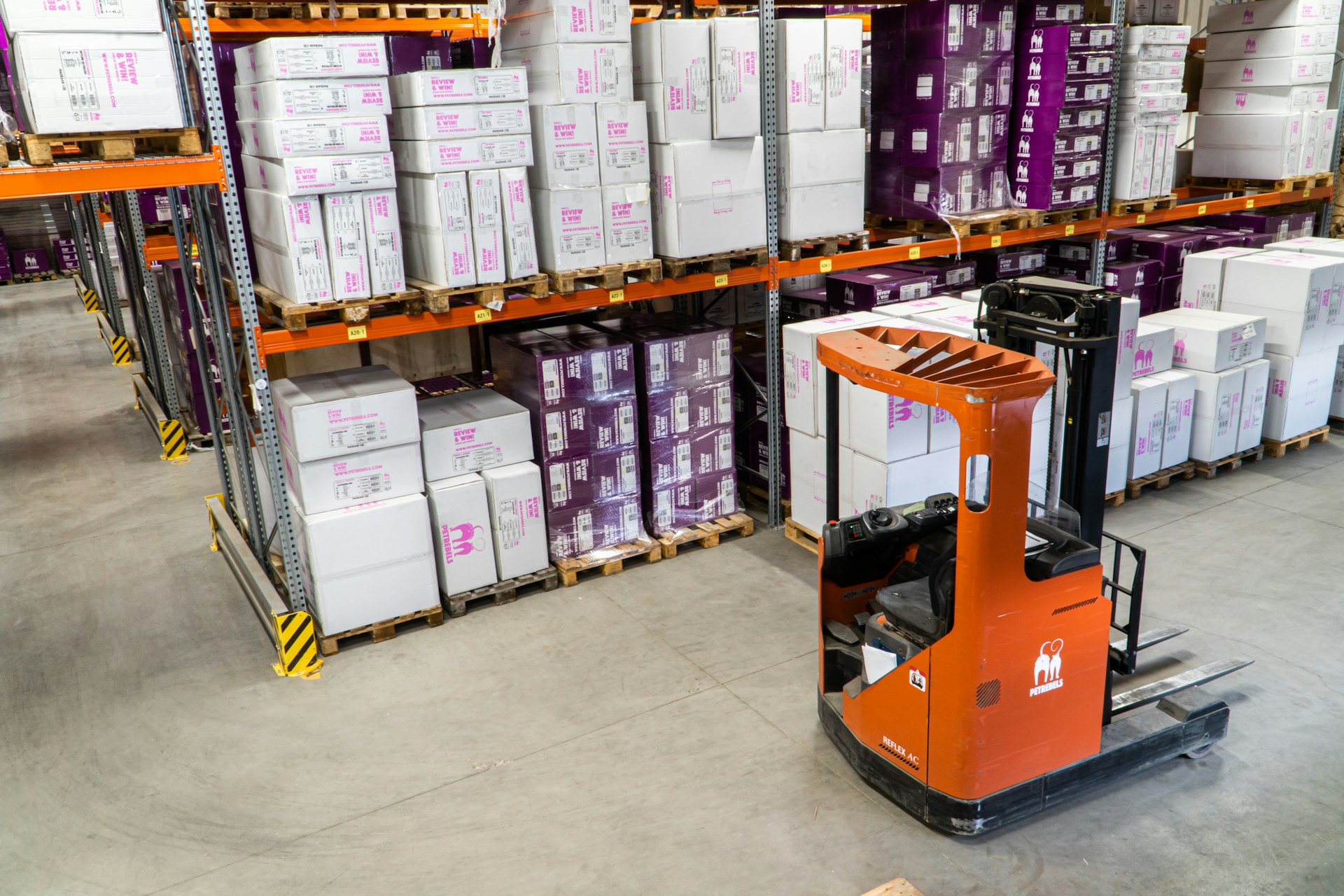
Adapt your ecommerce supply chain to meet dynamic consumer demands. Leverage technology for efficiency and sustainability to ensure customer satisfaction.
An ecommerce supply chain is responsible for customer satisfaction and business development. Online shoppers’ demands are rapidly changing, so you must be updated to meet their expectations. Ensuring the product arrives on time is part of delivering the best customer experience.
With the change in consumer demand, businesses are under pressure to constantly reevaluate and rethink supply chains to keep pace with the competition. That means adopting new approaches to drive down costs and speed up deliveries. And digital transformation is rendering the old models of supply chain management obsolete. Firms are compelled to notch up their game by embracing such advantages.
Ready to up your supply chain game? Let’s dig deeper into this subject.
How to understand consumer behavior in ecommerce
Successful ecommerce can only be achieved if you learn the shifting dimensions of consumer behavior in an online marketplace. A few critical trends have emerged recently, due to the influence of technology and emerging customer expectations.
Changing shopping patterns
Today, due to the wide adoption of smartphones, customers prefer to do their shopping with mobile applications because they are convenient and easy to use. Shoppers prefer apps over web browsers because of the usability factor, where you can save individual preferences for future access.
They also expect a seamless shopping experience along all touchpoints, either when shopping online or in physical stores. The demand for a unified shopping experience requires integrated online and offline operations.
Impact of technology on consumer expectations
Technology has revolutionized the way people shop. For instance, AR allows customers to see precisely how the product would look in their homes before buying it. Smarter ecommerce websites are integrating these tools into customer journeys to ensure customers remain satisfied and return fewer items.
Also, personalization has been playing a serious role in online shopping. AI-powered algorithms offer product recommendations according to your browsing and purchase history, making the shopping experience tailored and enjoyable. Customer journeys get smooth and swift with AI-driven personalization, saving time for consumers to find products they love.
Key components of an ecommerce supply chain
Each component is critical in an ecommerce supply chain because they all work together to ensure goods move swiftly from suppliers to customers. Among these, inventory management and warehousing/fulfillment are especially vital in seeing the seamless fulfillment of the entire supply chain.
1. Inventory management
Inventory management remains one of the most relevant areas within an ecommerce supply chain. The logical consequence of strong inventory management systems means that a business maintains optimal stock levels, to avoid being out of stock or overstocked, which could negatively impact profits.
Modern inventory management solutions use advanced analytics to track stock levels and predict demand, automating the reordering process.
2. Warehousing and fulfillment
Warehousing and fulfillment in ecommerce go beyond just storing products. Proper warehousing is where space utilization is optimized. Through the adoption of best practices, warehousing ensures that business operations are as efficient as possible.
Picking, packing, shipping, and returns, make it critical to organizing a seamless customer experience. Ecommerce fulfillment providers are focused on speedy and precise product delivery so that the business can pay attention to other strategic priorities.
Supply Chain Management Challenges
Supply chain management for a global ecommerce business doesn’t come without a set of obstacles. From supply chain disruption to logistical inefficiency, there are quite a few hurdles that can impact customer satisfaction and general operations effectiveness.
Probably the most critical issue would be supply chain disruption, where natural calamities, pandemics, or political unrest can quickly disable it from functioning and prevent the business from getting much-needed supplies from the manufacturers.
Other challenges involve inaccuracies in inventories, which may lead to situations of stockouts or overstock. Poor management of inventory will bring about increased operational costs with reduced profits.
The changes in regulations make managing an ecommerce supply chain even more challenging. Since new regulations might alter the way goods are sourced, produced, and delivered, you must keep an eye on every development that comes out and try to comply accordingly.
Apart from this, inefficiencies in last-mile delivery and high costs of shipment further make the supply chain operations slow. One way to address these inefficiencies is by optimizing fleet fuel management, minimizing fuel consumption, and making the routes as economically viable as possible.
Overcoming these challenges requires you to adopt advanced logistics solutions and forge strategic relationships that enhance efficiency in the delivery networks.
Technological innovations in ecommerce supply chain management
New technologies disrupt the management of ecommerce supply chains in significant ways, with innovations such as AI, ML, and blockchain contributing immensely to efficiencies and adding a layer of transparency.
1. Artificial intelligence and machine learning
AI and ML have become vital in managing ecommerce supply chains. Where AI helps in predicting customer demand, optimizing stock levels, and minimizing costs, ML identifies patterns and solves problems much more quickly, thus improving overall efficiency.
In logistics, machine learning becomes highly useful in automating routine tasks and freeing employees for more strategic tasks. ML enables faster and more accurate decision-making required in the fast fast-paced ecommerce setup.
2. Blockchain technology
Enhancing transparency by creating a secure, lasting register of every transaction enables customers to trace the journey of their products from source to delivery, thus increasing confidence and reducing the risk of counterfeit or stolen goods.
The development of a transparent and open supply chain benefits both businesses and consumers in how it offers great insight into the whole process from raw materials down to delivery and ensures that everything is sourced and distributed ethically.
Agility and flexibility in the supply chain
Agility and flexibility are crucial elements for thriving in a constantly changing ecommerce market. Every business venture has to set up a system through which they’ll be able to respond to demand changes and market conditions without any delay. An agile supply chain allows your company to easily switch over to changing the levels of inventory, strategies for sourcing, and changing schedules for production.
Such logistics flexibility helps organizations when supply chain delays or consumer demand shifts occur and keeps businesses running without any significant glitches. Your company can make informed decisions with real-time data and predictive analytics to help you outcompete others.
Agility and flexibility very often become a significant factor in the success involved within the ecommerce environment. This leads to a quick response to the changed circumstances, allowing you to meet customer expectations by ensuring efficiency and growth.
Ecommerce supply chain best practices
There are many aspects that you need to be aware of while building up a successful ecommerce supply chain. The major areas where you need to focus include communication, collaboration, and data usage.
1. Solid communication and collaboration
Clear communication helps to ensure that all levels in the supply chain are pointed in the right direction. Real-time updates for businesses can help accelerate communication between suppliers, logistics teams, and retailers in making wiser decisions and achieving an overall operational efficiency gain.
Thanks to collaboration platforms for sharing data and information in real-time, teams work seamlessly together to resolve problems the moment they arise and keep the wheel of supply in the chain turning.
2. Data analytics
Data analytics is taking over in revolutionizing how businesses manage their supply chains. Using advanced analytics tools, companies are well-equipped to extract actionable insights in demand forecasting, inventory management, and operational efficiency.
Data-driven decision-making enables the optimization of business supply chains toward cost reductions, increased efficiency, and enhanced customer satisfaction.
Sustainability within supply chains
As consumers become more aware of environmental problems, the sustainability factor is trending worldwide within ecommerce supply chains. Companies have to be more concerned about reducing their carbon footprint and other eco-friendly measures that would appeal to the environmentally conscious consumer.
1. Green logistics
Green logistics is a term applied for a reduction in the ecological impact that results from shipping and warehousing processes.
Most business enterprises today streamline their routes of delivery by using electric cars, devising energy-efficient solutions that minimize the levels of emission, and cutting costs in the process.
2. Eco-friendly packaging solutions
Another fast-increasing sector in ecommerce is green packaging. Organizations are more engaged in the use of biodegradable or recyclable material for product packaging to reduce their ecological footprint and, at the same time, increase customer demand for greener products.
By adding sustainability to supply chains, you can lessen your carbon footprint but also be more closely related to your customers through brand loyalty and trust.
Optimization for operational success
A well-optimized ecommerce supply chain is crucial for meeting the demands of today’s consumers. Integration of new technologies like AI, machine learning, and blockchain smoothens operations and provides better efficiency, leading to customer satisfaction.
Supply chains need to be agile and flexible with fast-moving markets on the back of advanced inventory management and logistics solutions. Also, sustainability practice and global strategy provide the path to operational success while being strongly aligned with future operations. When these elements are prioritized, your business can continue to thrive in a world powered by ecommerce.
Was this news helpful?







 Yes, great stuff!
Yes, great stuff! I’m not sure
I’m not sure No, doesn’t relate
No, doesn’t relate



